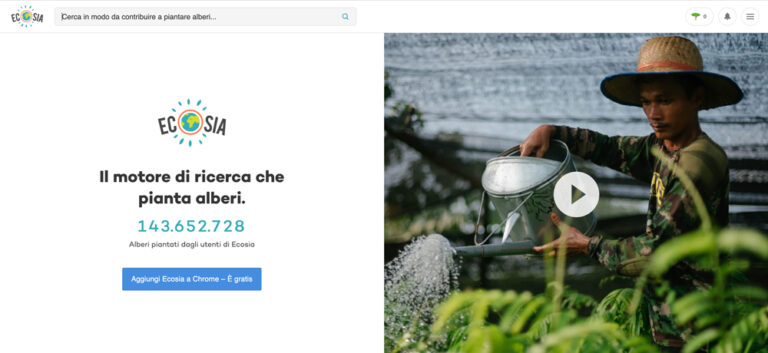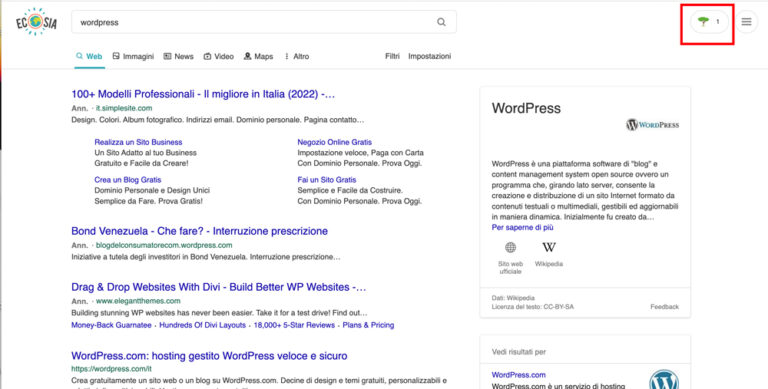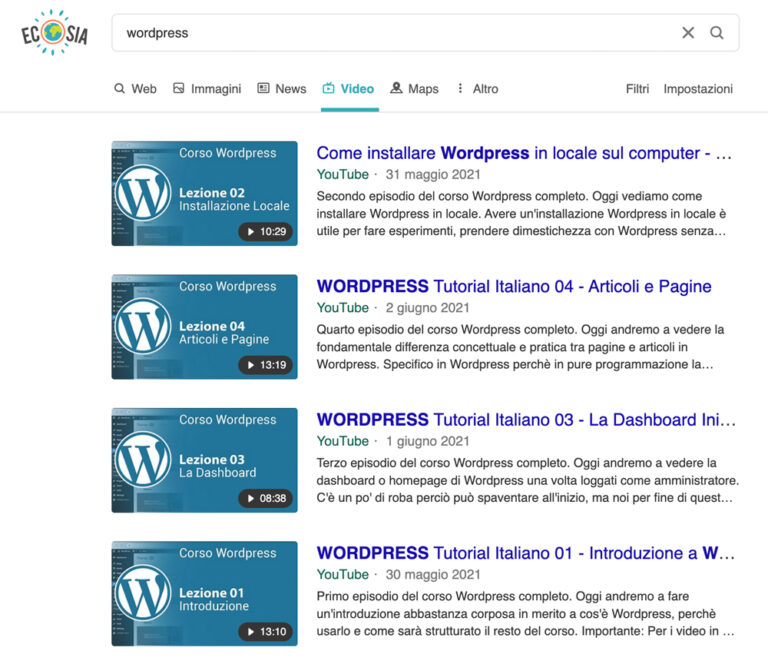
When it comes to search engines, one or two big players get most of the attention. However, there are many alternative search engines to Google that can help you find the content and products you are looking for. Ecosia is one of them.
If you see “Ecosia” as a referrer in your analytics account and have been wondering “what is Ecosia?”, this article is for you. We will discuss what makes this search engine different and why you should consider using it.
Finally, we will look at how to optimize your content for Ecosia.
Let’s get started.
Table of contents visualize
What is Ecosia?
Ecosia calls itself an environmentally friendly search engine. It offsets its carbon footprint by using profits from search ads to plant trees in more than 30 countries around the world. At the time of writing, the search engine has funded the planting of more than 140,000,000 trees:

Like most (if not all) search engines, Ecosia receives its funding from ads . However, it reinvests 80 percent of its revenue into nonprofit organizations dedicated to planting trees around the world.
In addition to its efforts to increase tree populations, Ecosia also highlights search results from companies that engage in environmentally friendly practices. Armed with this information, you can choose to reward “green” companies with your traffic and money.
Using Ecosia is the same as any other search engine. Its search results are powered by Bing , with some algorithm changes exclusive to Ecosia. A big advantage of using this “green” search engine is that you can view as you browse Using Ecosia is the same as any other search engine. Its search results are powered by Bing , with some algorithm changes exclusive to Ecosia. A great advantage of using this “green” search engine is that you can view as you browse a tree counter among the results: a tree counter :

This icon indicates how often you use Ecosia, including new searches and moving from one results page to another. According to the search engine, it takes about 45 searches to fund a new tree. Which actually isn’t that many when you think about it. How many times do you search for something, don’t see the right results, refocus your search and repeat it a few times until it’s right? Probably many.
By using Ecosia and looking at that icon, you can keep an eye on how many trees you are helping to plant around the world.
Who should use Ecosia?
Since Bing powers Ecosia’s search results , the real question is “when does it make sense to use Bing?” 2.88% of users worldwide rely on Bing for their results. Ecosia, on the other hand, has a market share of 0.11% .
This is not to say that Bing and Ecosia are not good search engines. Bing, in particular, receives a lot of attention because of its intuitive video search capabilities . In our experience, searching for videos on Bing provides a better experience than Google:

One disadvantage of using Ecosia is that it does not emulate Bing’s SERP layout. Instead, it opts for a more Google-like style:

They are mostly the same video search results as Bing, but Ecosia’s usage seems more like Google than its Microsoft counterpart.
Arguably, Bing search has made strides since its launch in 2009. However, it takes a lot of effort to pull users away from their favorite search engines. That is why there are so few alternatives to Google with considerable market share.
For the privacy-conscious
When it comes to privacy, this environmentally conscious search engine treats your data with much more respect than most other search engines. It does not store search information permanently, sell data to advertisers or use external tracking tools . It also encrypts searches.
If you want to use a search engine that offsets your carbon footprint and does not store search data, Ecosia should be your first choice. On the same note, if you already use Bing but want to help plant trees around the world, consider switching to Ecosia.
Your choice becomes easier when you compare it with other search engines such as Yandex or DuckGoGo. Because of its partnership with Bing, Ecosia offers much better results than Yandex (at least for Western audiences).
In terms of privacy, DuckGoGo has a clear advantage, as it does with the vast majority of search engines. However, DuckGoGo certainly does not follow in Ecosia’s green footsteps.
Optimizing your content on the SEO side for Ecosia
Although Ecosia’s search results are powered by Bing, the search engine also “improves” its rankings with its own algorithms. If you run the same query on both search engines, you will see similar but not identical results .
One disadvantage of using Ecosia as a webmaster is that the search engine does not publish much information about optimization. Its algorithms are not public and do not mention any additional ranking factors beyond those used by Bing.
Ecosia highlights “green” results. , but does not promote them in rankings. However, you may attract additional attention and traffic if your business is considered environmentally friendly. You can achieve this by stocking sustainable products, using environmentally friendly business practices, or following official green guidelines.
Overall, if your website follows the fundamentals of search engine optimization (SEO) and you optimize it for Bing, your content should also rank well in Ecosia. By optimizing for Bing , we intend to follow the following practices:
1.Using Bing’s Webmaster Tools.
2.Registering your business on Bing Places
3.Keeping up with the Bing Webmaster Blog
4.Increasing your social media presence
Bing and Ecosia also include social media in their search results. If your website has a sizable following on online networks or your content gets a lot of shares, your site might rank better on Ecosia and Bing than on Google in Google SERPs..
Overall, there is a great deal of overlap between website ranking factors for different search engines. Following SEO best practices will guarantee you excellent results across the board.
Conclusion
Ecosia may not have the most significant market share among the various search engines. However, we recommend that you optimize your content for both Bing and Ecosia. That way, you will be able to tap into audiences that may not find your content using more traditional options such as Google.
As a searcher, it is worth taking note of this search engine as an alternative to Google because of the good the company is trying to bring to the environment.
When it comes to growing your website, it rarely makes sense to put all your eggs in one basket. This principle also applies to search engines. Although Google is the dominant option, you’re leaving a lot of traffic on the table if you’re not optimizing your content for other platforms like Ecosia.
